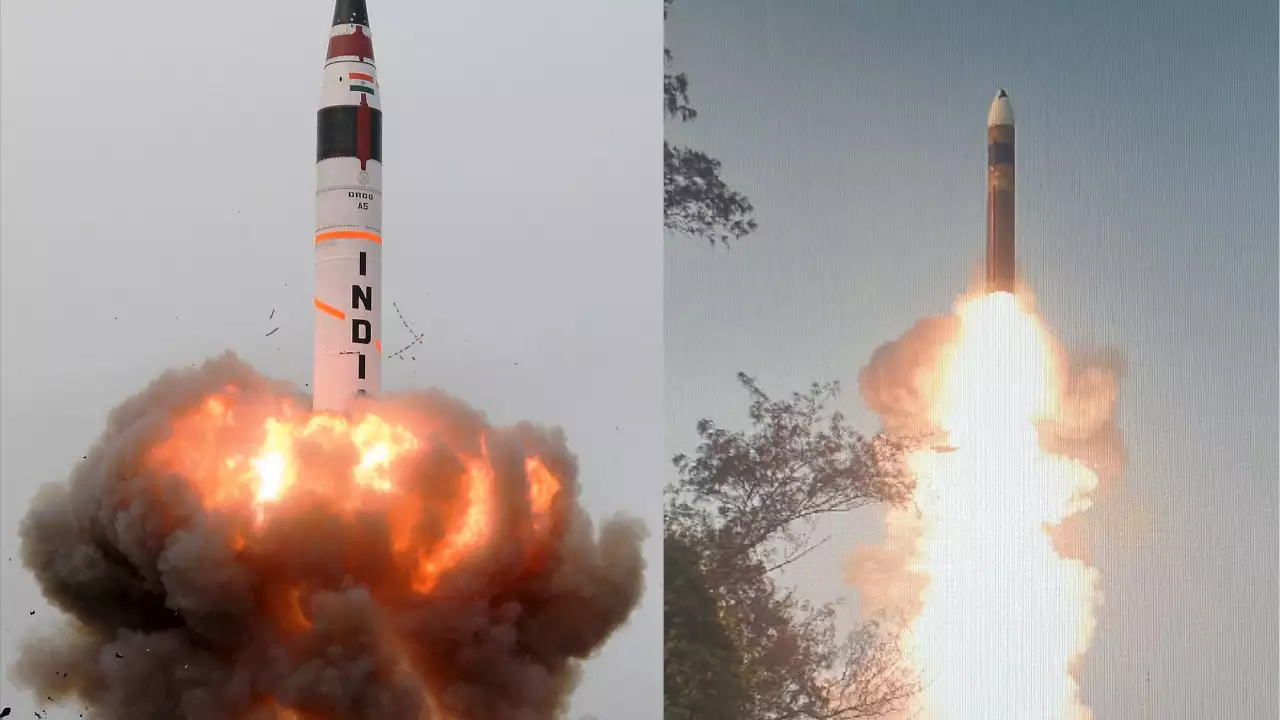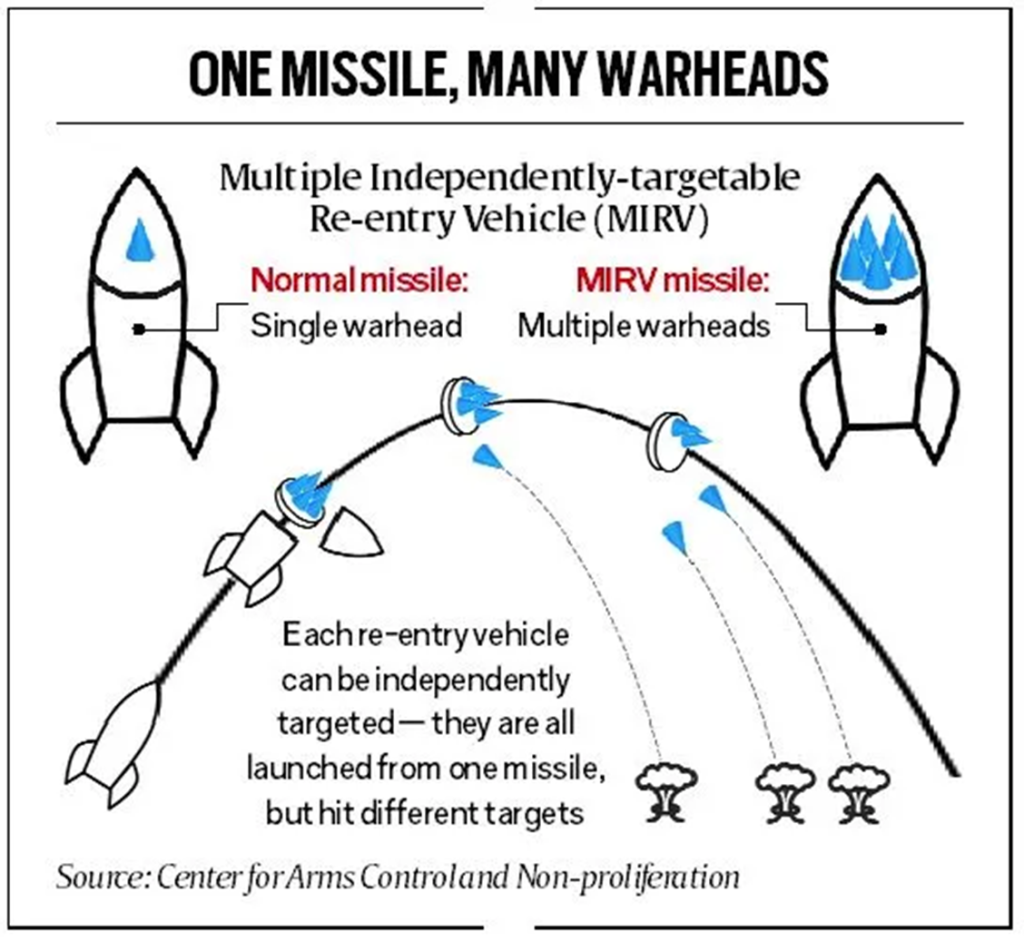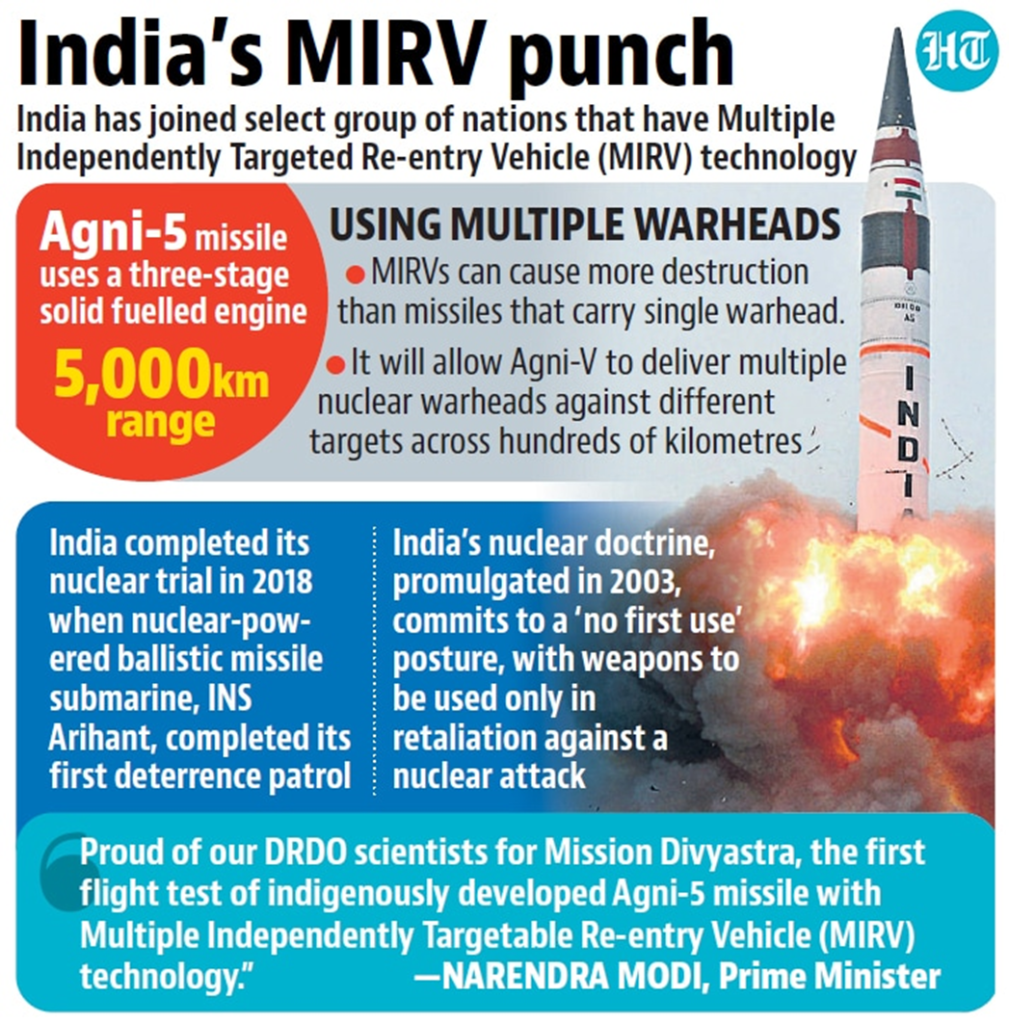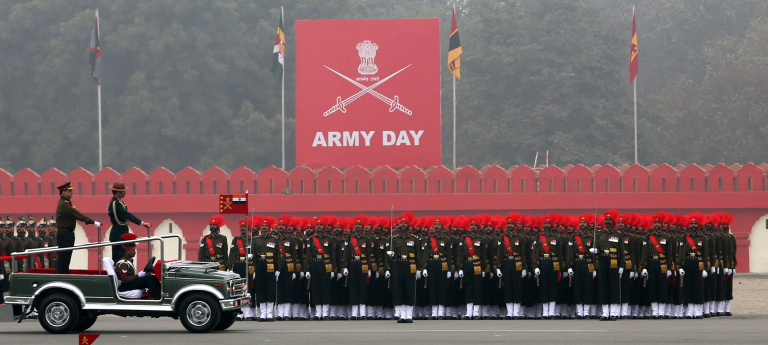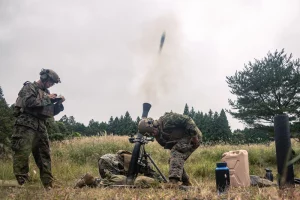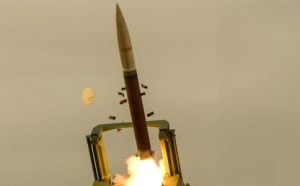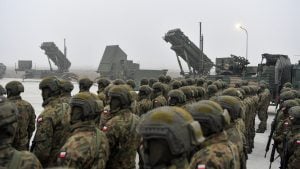DRDO conducted first successful flight test of indigenously developed Agni-5 missile with Multiple Independently Targetable Re-Entry Vehicle (MIRV) technology.
DRDO’s Mission Divyastra- MIRV Technology
DRDO conducted first successful flight test of indigenously developed Agni-5 missile with Multiple Independently Targetable Re-Entry Vehicle (MIRV) technology. The flight test named Mission Divyastra was carried out from Dr APJ Abdul Kalam Island in Odisha. Various Telemetry and radar stations tracked and monitored multiple re-entry vehicles. The Mission accomplished the designed parameters.
This ability to carry multiple warheads on a single missile, called MIRV, is a technology that originated five decades ago, but is in possession of only a handful of countries — the USA, Russia, China, UK and France. Last year, Pakistan also claimed to have tested a MIRV-equipped missile, Ababeel.
Underlining the significance of the test, Prime Minister Narendra Modi announced it himself in a congratulatory message for DRDO much like he had done five years ago when India had carried out an anti-satellite test.
Missiles equipped with MIRV technology can aim multiple targets that can be located hundreds of km apart. Agni-5, which can carry nuclear warheads and hit targets more than 5,000 km away, is aimed mainly at thwarting the challenge from China. It uses a three-stage solid-fuelled engine.
The Agni 1 to 4 missiles have ranges from 700 km to 3,500 km and have already been deployed. This included medium to intercontinental versions. Agni-5 has been successfully tested several times since 2012. Monday’s test follows the two tests of Agni-P missile in 2021. Agni-P are modernised versions of the older generation Agni-1 and Agni-2 missiles equipped with latest technologies. In December 2022, DRDO also tested the night-time capabilities of Agni-5. The next upgrade of Agni missile, Agni-6, is expected to be a full-fledged intercontinental ballistic missile with a range well over 7,000 km.
